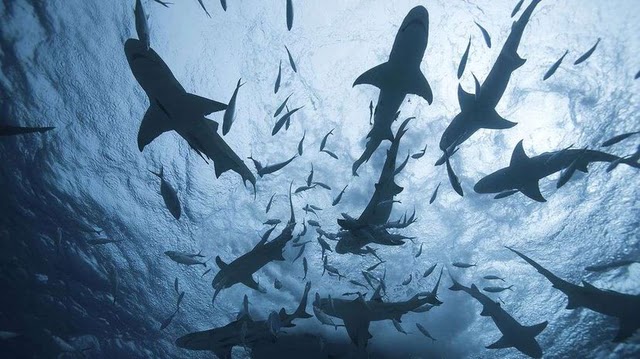Quck answer
Sharks are one of the most feared and misunderstood creatures on the planet. Despite their notoriety, there is still much we don’t know about them. For example, there are over 500 different species of sharks, but we only have detailed information on a fraction of them. Additionally, many aspects of their behavior and biology are still a mystery, including their migration patterns, mating habits, and even their lifespan. This lack of knowledge makes it difficult to effectively conserve and manage shark populations. While research efforts are ongoing, it’s clear that there is still much more to learn about these fascinating animals.
Wild Animals

Despite our knowledge of sharks, there is still much that remains unknown to science. While sharks have a bad reputation among humans, the reality is that more people are bitten by other people in New York City alone than by sharks worldwide. This is partly due to the fact that sharks have only been given proper scientific attention since the mid-1900s and are extremely difficult to study and keep in captivity. As a result, much of what we know about shark behavior has been observed in the wild.
Recently, a paper published in Science made headlines by suggesting that the Greenland shark (Somniosus microcephalus) may live for 400 years or more, almost doubling the life expectancy of the bowhead whale (211 years), which was previously believed to be the longest-lived vertebrate known to science. The study estimated the age of the sharks through carbon-14 dating of tissue in the center of their eye lenses. The oldest shark was estimated to have been alive during the time of the Mayflower’s Atlantic crossing in 1620.
However, despite this groundbreaking discovery, there is still much we don’t know about sharks. Researchers have a long list of questions they are still seeking answers to, including the behavior, migration patterns, and mating rituals of different shark species.
The mysteries of sharks are vast and largely unsolved. Dr. Gene Helfman from the University of Georgia’s Odum School of Ecology and co-author of Sharks: The Animal Answer Guide explains that it’s difficult to track sharks to gather information about their whereabouts. However, advancements in technology for placing transmitters on sharks have revealed that many large sharks migrate hundreds or even thousands of miles each year. The reasons for migration and how they navigate are still unknown. There are approximately 500 identified shark species, but new ones are discovered each year. The reproductive habits of sharks are also shrouded in mystery, with little observed coitus for many species. Researchers have long debated whether sharks sleep since they must keep moving to pass water over their gills. Sharks play various roles in ecosystems, but it’s unclear what happens when they disappear. Sharks can be found in schools, but it’s unknown whether they actively socialize or simply tolerate each other for resources. Sand tiger sharks are particularly creepy since they cannibalize each other in utero until only one survives the year-long gestation.
FAQ
1. How many species of sharks are there?
There are over 500 known species of sharks. However, scientists believe that there may be many more species that have yet to be discovered. These elusive creatures inhabit all of the world’s oceans, from the tropics to the polar regions.
2. Can sharks get cancer?
Contrary to popular belief, sharks can get cancer. In fact, they are actually less prone to developing tumors than humans. Some studies suggest that shark cartilage may have anti-cancer properties, but there is not enough scientific evidence to support this claim.
3. Are all sharks dangerous to humans?
No, not all sharks are dangerous to humans. While some species, such as the great white shark, have been known to attack humans, most sharks are not interested in human flesh. In fact, humans pose a much greater threat to sharks than the other way around.
4. How do sharks breathe?
Sharks breathe through their gills, which are located on the sides of their heads. As water passes over the gills, oxygen is extracted and carbon dioxide is expelled. Some species of sharks are able to pump water over their gills, allowing them to remain stationary while still breathing.
5. Do sharks have any natural predators?
Yes, sharks do have natural predators. Larger sharks, killer whales, and crocodiles are all known to prey on sharks. Additionally, some species of fish, such as the cookiecutter shark, are known to feed on the flesh of larger sharks.
6. How long do sharks typically live?
The lifespan of sharks varies greatly depending on the species. Some species, such as the spiny dogfish, can live for up to 100 years. Others, such as the shortfin mako shark, may only live for 20 years. Many species of sharks do not reach sexual maturity until they are several years old, which can make them particularly vulnerable to overfishing.





Leave a Reply